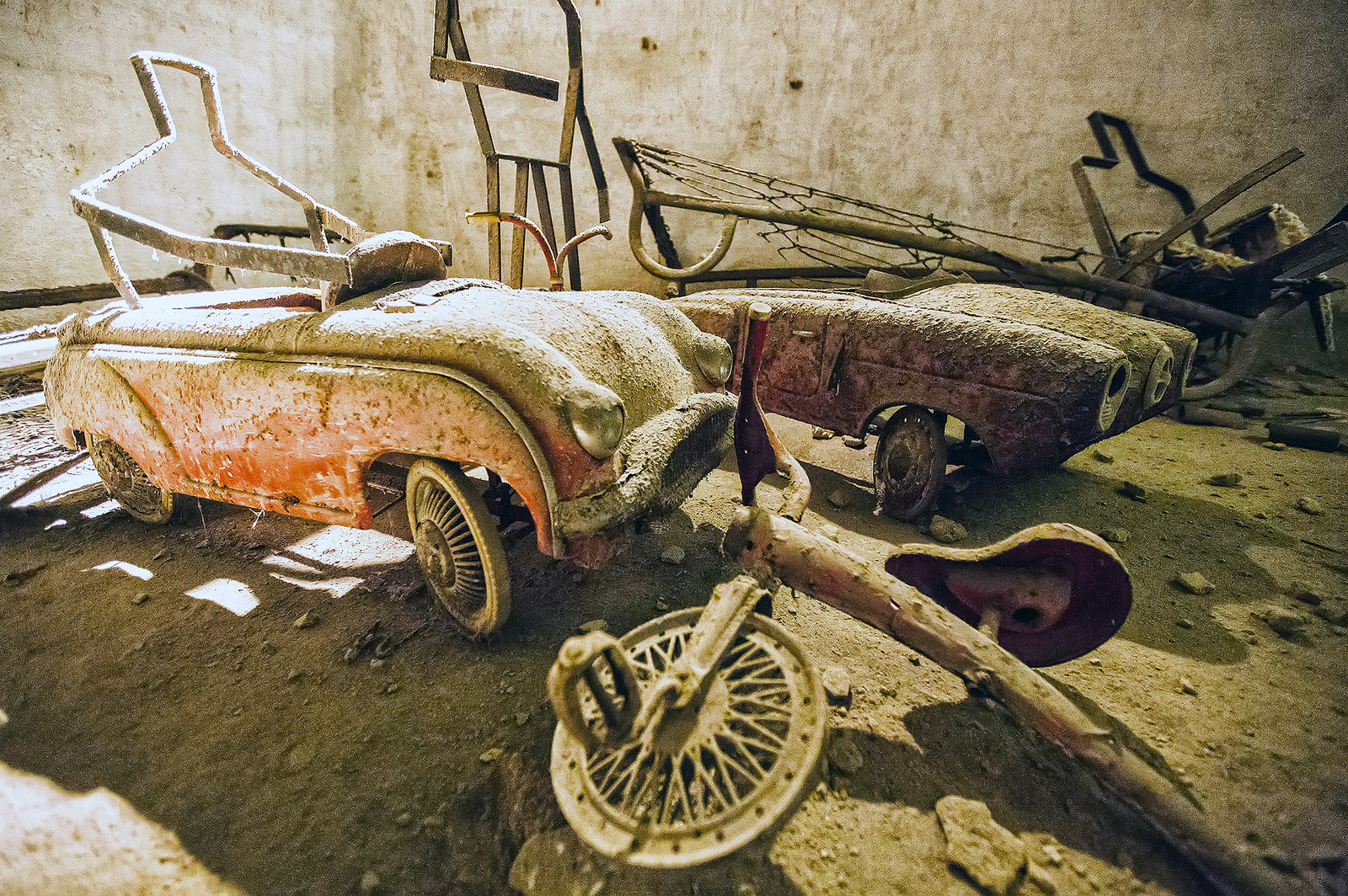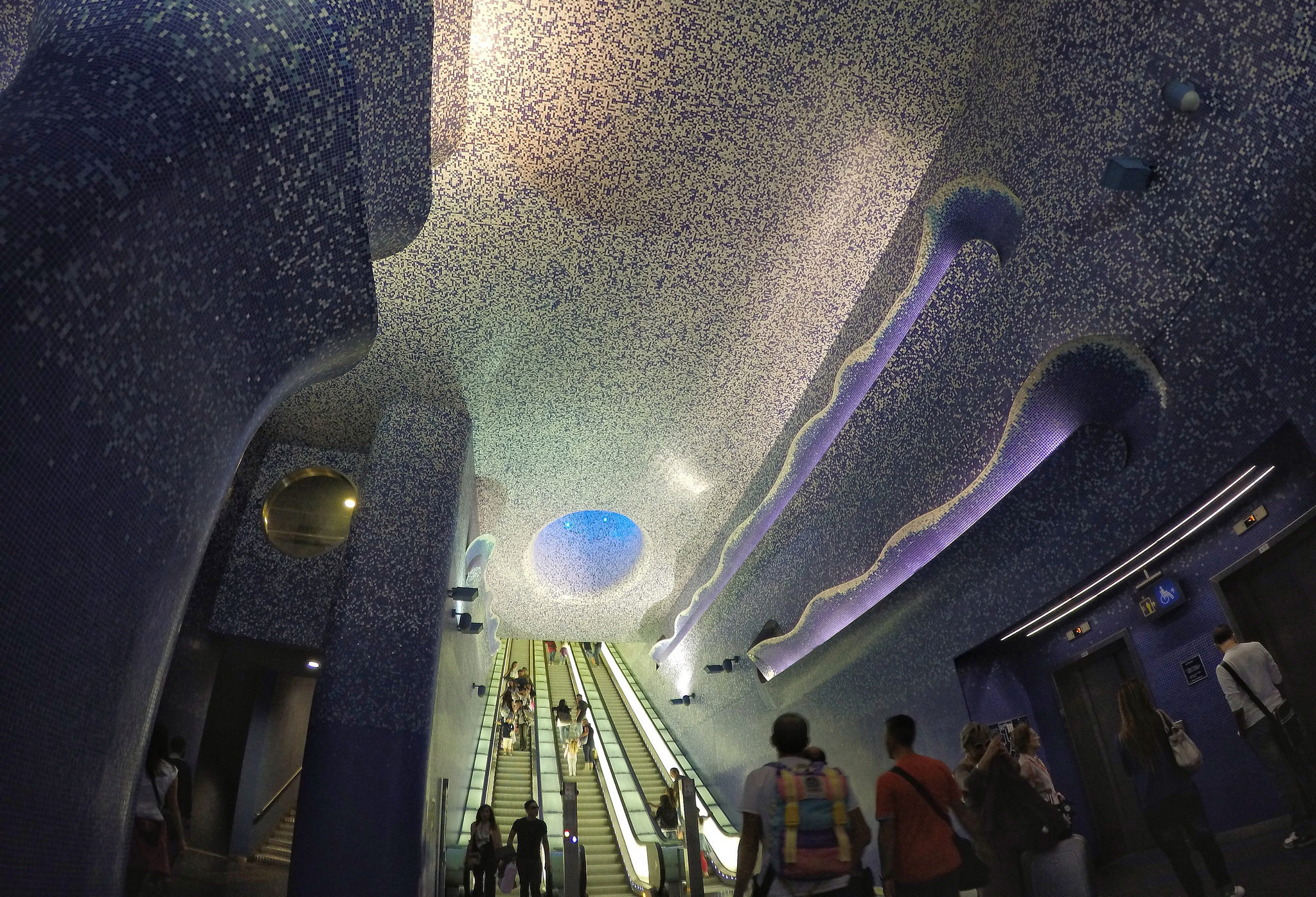Naples is one of the jewels in Italy’s crown. Nestled on the Bay of Naples, it is a popular stopping off point for Mediterranean cruises and a launching pad for trips to Pompeii. The historic centre of Napoli is an officially designated UNESCO World Heritage Site and the entire city is a veritable gold mine of significant art and architecture, some of which dates back 4,000 years.

View over the Bay of Naples to Mt. Vesuvius (Photo: Andrea Schaffer via Flickr)
From the fertile, ash-strewn slopes of the infamous and still active volcano Mt. Vesuvius, to the higgledy-piggledy twists and turns of Naples Old Town, there is a healthy selection of experiences that are unique to the city of Naples. While trying to see everything could keep an itinerary packed for weeks, here are some of the more unusual sights that you’ll struggle to find anywhere else.
Visit former cities frozen in time by a volcanic eruption
It’s safe to say that Pompeii and Herculaneum are two of the most unique places on Earth. While Pompeii is the larger and better known archaeological site, Herculaneum was remarkably preserved, with some original wood surviving the almost 2 millennia since the 79AD eruption of Vesuvius, which brought an abrupt halt to both cities. Frescoes, paintings, houses and even skeletons were frozen in time, covered by pyroclastic flows during the eruption, creating one of the most unfortunate but also exquisitely preserved geological tragedies in recorded history.
A great way to discover these former cities and unlock many of the stories surrounding their fatal demise is on a tour. For a good list of options, check out the tours listed on Viator here.
Pompeii – Via Villa dei Misteri; daily 9am-7.30pm
Herculaneum (Ercolano) – Corso Resina; daily 8.30am-6pm

A street in Pompeii (Photo: Andrea Schaffer via Flickr)
See thousands of skeletons at Fontanelle Cemetery Caves
Combining natural caves, tufa mines, and ancient Greek and Roman tunnels, the Cimitero Fontanelle is best known for the assortment of human skulls that are contained within. The history behind the 30,000 square metre ossuary is best outlined by expert guides who run regular tours, but essentially the story goes like this: centuries ago the site was used as a place to “offload” remains due to overcrowding in traditional burial sites such as churches. For a price, undertakers either pretended to bury the dead overground or would dig up old remains, put them in a sack and throw them into Fontanelle or other caves in the area. Tumultuous events, such as the plague of 1656, meant that these numbers stacked up over the years, resulting in the skull and skeleton-laden site we know today. The caves reopened to the public in 2006 after being moth-balled for several decades due to concerns that it was being misused by religious cultists. Today it is one of Naples’ most fascinating and unique places of interest.
Via Fontanelle; Mon-Sat 9.30am-4.30pm

Spooky skulls inside the Fontanelle Cemetery Caves (Photo: Jeffrey Clayton via Flickr)
Witness sick and broken dolls being nursed back to health
In Naples, there are only so many souvenir shops and leather boutiques you can peruse before the urge for something a little more quirky awakens your retail radar. And for quirkiness, there’s nothing quite like the Ospedale delle Bambole, a ‘dolls hospital’ that is both a shop and a museum. Filled with dolls, figurines, and traditional toys for sale, the shop is also somewhere people can bring their broken dolls to be fixed. The idea dates back to a time when dolls were made of porcelain and easily breakable. A local marionette maker called Luigi Grassi was often asked to fix the dolls and due to the high demand he continued with this tradition, passing his skills to future generations, eventually resulting in the opening of the now-famous Naples doll’s hospital.
Via San Biagio Dei Librai; Mon-Sat 10am-3.30pm
Take a tour of the Naples Underground
Beneath the city of Naples is a fascinating network of tunnels that have been excavated over the last two and a half thousand years. These tunnels of Naples Underground have been put to many different purposes by a succession of empires and rulers. See Emperor Nero’s dressing room below the theatre, the WWII-era cars that were stashed down there when the tunnels became an air raid shelter, and the more conventional former uses like as sewers and aqueducts that have created a veritable subterranean city waiting to be explored. The tunnels are best experienced over the course of half a day.
To book this tour, please click here.

Toys left behind in underground Naples during WWII (Photo: Show In My Eyes via Flickr)
Brave the National Archaeological Museum’s “Secret Cabinet”
Not for the prudish, Naples’ National Archaeological Museum is home to an erotically-charged collection of Roman artefacts that recall a time when concepts of sexuality were weighed down with taboos and puritanical social mores. Featuring everything from erotic frescoes to penis-shaped wind chimes, the collection, which was unearthed during excavation of Pompeii and Herculaneum, has remained encased in a Gabinetto Segreto (or ‘secret cabinet’) since 1849 to keep it away from the innocent, corruptible eyes of women, children and the general public at large. It was finally opened to the public in 2000 and can be observed by all.
Piazza Museo; Weds-Mon 9am-7.30pm
Shop for seasonal gifts along Via San Gregorio Armeno
A brief glance at the bric-a-brac on display along Via San Gregorio Armeno may give the impression of a conventional street market – but closer inspection reveals something altogether more distinctive. That’s because the shops along this bustling avenue in the heart of Naples are dedicated exclusively to the Christmas Nativity. Inevitably, Christmas sees the street engorged by a heaving mass of people, but throughout the year visitors come to marvel at the myriad miniature figurines on display. You can even watch the artisans at work as they hand-craft their delicate creations.

Figurines on display at a shop on Via San Gregorio Armeno<(Photo: Gérard JAWORSKI via Flickr)
Commute through stations converted into art installations
Naples’ metro system is nothing out of the ordinary – until, that is, you venture into a particular phalanx of stations that have been transformed into a vibrant arts project. During the construction and expansion of several of the city’s metro lines, the municipality of Naples instigated the Stazione dell’Arte (Stations of Art) programme, which gave contemporary artists and architects blank canvasses on which to create unique and unusual artistic designs, from wall art to full blown installations, inside a number of the network’s stations. Distributed along the lines 1 and 6 are more than 180 pieces of art by roughly 90 artists, who each bring their own individualistic styles, and the result is both beautiful and in harmony with its environment, adding a whole new dimension to the normally humdrum experience of riding a city metro.

Via Toledo Metro Station in Naples (Photo: Marco Miele via Flickr)
Donate some coffee to the less fortunate
In Italy there is said to be one coffee bar for every 490 Italians, and nowhere is coffee imbibed with more enthusiasm and regularity than in Naples. But for those who consider it an indulgence there is a time-honoured tradition that will add a sense of altruism to your addiction. This tradition is called caffè sospeso, or suspended coffee, and is a simple, anonymous act of generosity whereby customers toss receipts in an unused coffee pot on the counter, so that those who cannot afford to buy their own can pull them out and use them. Alternatively, customers can pay in advance for an extra coffee, and the cafe keeps a list or hangs the receipts in the shop window. The tradition was popularised in Naples during World War II and has found a revival in recent years during hard economic times, even spreading across the rest of Italy. But for a truly authentic caffè sospeso experience, you must come to Naples.
PLAN YOUR TRIP
There are a wide number of hotels dotted across Naples, from budget to luxury accommodation. Many of these can be found near the airport, while the main train station is a popular spot for more affordable options. For something more upscale, the city’s historic centre and the Lungomare/Bayfront areas are both worth checking out. If you’re looking for a cheap room in Naples, check out our editor’s selection, which you can read here.